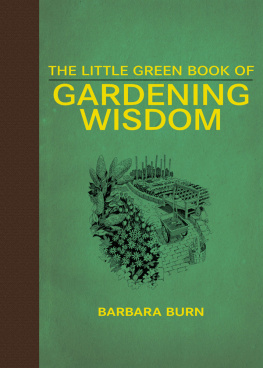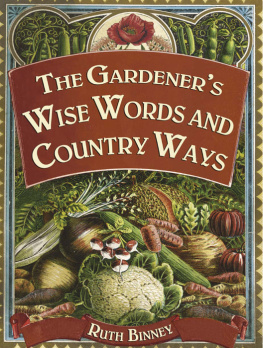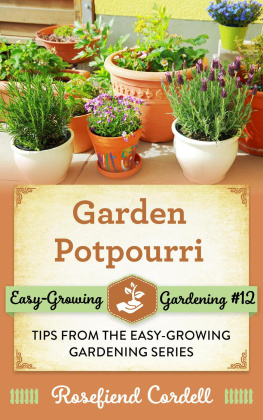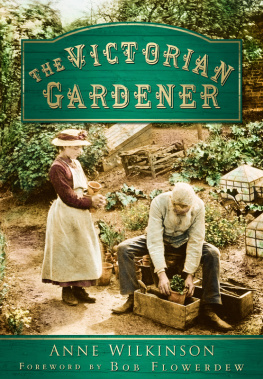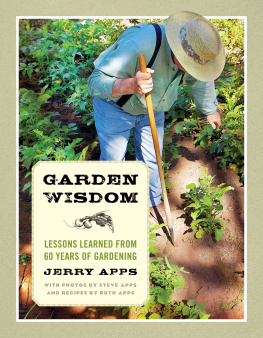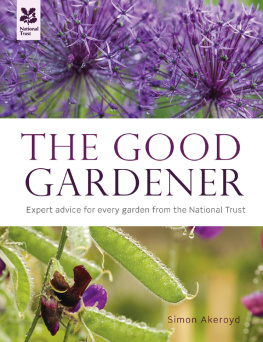Copyright 2014 by Barbara Burn
All Rights Reserved. No part of this book may be reproduced in any manner without the express written consent of the publisher, except in the case of brief excerpts in critical reviews or articles. All inquiries should be addressed to Skyhorse Publishing, 307 West 36th Street, 11th floor, New York, NY 10018.
Skyhorse Publishing books may be purchased in bulk at special discounts for sales promotion, corporate gifts, fund-raising, or educational purposes. Special editions can also be created to specifications. For details, contact the Special Sales Department, Skyhorse Publishing 307 West 36th Street, 11th floor, New York, NY 10018, or .
Skyhorse and Skyhorse Publishing are registered trademarks of Skyhorse
Publishing, Inc., a Delaware corporation.
www.skyhorsepublishing.com
10 9 8 7 6 5 4 3 2 1
Library of Congress Cataloging-in-Publication Data is available on file.
ISBN: 978-1-62873-789-9
Printed in China
Photo Credits: Photographs were supplied by the institutions, organizations, or individuals credited below and are protected by copyright. Photographs not credited below were taken by the author. Mary Ballard: 92, 140, 144, 161, 175; Bartow-Pell Conservancy: 60; George Callas: 25; Mary Colby: 72, 90, 130, 137, 170; Michelle Miller: 52, 97; National Gallery of Art: xiv (Ailsa Mellon Bruce Collection, 1970, 17.54), 3 (Widener Collection, 1942.9.10), 11 (Gift of Victoria Nebeker Coberly, in memory of her son John W. Mudd, and Walter H. and Leonore Annenberg, 1970.17.54); Jane Protzman: 6, 9, 49, 58, 66, 68, 75, 79, 102, 108, 122, 126, 133, 152; Shutterstock: 14, 44, 47, 56, 85.
Contents
Acknowledgments
I n putting together this little book of quotations about gardening, I naturally dove into innumerable books on the subjectsome in my own collection, some in the collections of friends, and some on Google Books, an extremely useful resource that enabled me to check sources, correct erroneous transcriptions and attributions, and find new books I would not have found on my own. In particular, I would like to acknowledge the assistance of several friends who helped me along the way: Ellen Bruzelius, executive director of the Bartow-Pell Mansion Museum; Martina DAlton, Mary Colby, Michelle Miller, Mary Ballard; Jane Protzman, and my editor, Steve Price.
Introduction
W hen I first began gathering tidbits of gardening lore for The Little Green Book of Gardening Wisdom , I was surprised to find there were so many quotes about gardening that deserved to be collected. Although I perused only a hundred or so volumes about gardening and agriculture out of the thousands that have been published since the invention of written language, I concluded that the subject of growing things was of far more universal interest than I had anticipated, and a great deal more uplifting than all the volumes devoted to war and political history. Indeed, many of the words devoted to the subjects of love and religion rarely conveyed attitudes as positive and generous as those demonstrated by gardeners toward other gardeners.
Historians have placed the beginnings of language and civilization with the development of agriculture, and it is fascinating to read about gardens of the Ancient Near East and archaic Greece, which are known to us today through cuneiform tablets and oral histories, later supplemented by texts in the Old Testament and eyewitness accounts from Xenophon, Diodorus, and other Greek and Roman historians. These gardens were not all created merely for growing food; many were personal gardens designed to sustain the soul and please the eye (and nose). In these descriptions, you can follow the evolution of the Garden of Eden from Genesis into the hortus conclusus (enclosed garden) of the Middle Ages and eventually into the formal gardens of France in the seventeenth century and even the charming cottage gardens of England in the nineteenth century. And throughout that journey you will be able to see how the garden has represented for so many the connections between themselves and the natural world, the link with their gods, the bond to their fellow humans.
The most surprising part of my treasure hunt was learning that so many people known to us for their achievements in other fields were enthusiastic gardeners. Many literary figures, including Jane Austen, Edith Wharton, and Colette, were well known for their devotion to gardening, but that group also includes Edgar Allan Poe, Henry James, Rudyard Kipling, and Jamaica Kincaid. Philosophers from Socrates to John Locke to Ralph Waldo Emerson and politicians from Cicero to Andrew Marvell and Thomas Jefferson have all had wise words to share on the subject of mans relationship with the natural world through their gardening experience, along with such naturalists as the Comte de Buffon, Henry David Thoreau, and Edwin Way Teale.
The richest material, naturally, was provided by landscape and garden designers, from the personal gardens of Pliny the Elder and Gertrude Jekyll to the public spaces of Alexander Jackson Davis and Frederick Law Olmsted, and by amateur gardeners who have found fulfillment in the simple acts of digging, planting, weeding, and harvesting. It was refreshing to discover, as I read through garden history, how interconnected many of these writers were. The critic and artist John Ruskin was a great admirer of Homers description of classical gardens in the Odyssey , and Frederick Law Olmsted, the designer of Central Park, among other masterpieces, admired Ruskin, as did Gertrude Jekyll, whose influence on flower gardening is still significant today. William Kent designed many important gardens in eighteenth-century England, virtually revolutionizing landscape design as he went, but he apparently had little to say on the subject. However, his friend the poet Alexander Pope, another devotee of Homers garden descriptions, was able to put Kents work into words when he wrote that All gardening is landscape painting, and garden chronicler Horace Walpole praised Kent as an innovative genius who saw that all nature was a garden. It is interesting to note that several writers on the subject of garden and landscape design were actually outspoken advocates of new ideas and tastes, choosing natural over formal approaches or dismissing annual beds in favor of perennial borders.
Another surprise for me was the large number of websites devoted to the subject of garden quotes, and at first I thought they would make my task easier, having captured many of the bits of garden wisdom handed down through the ages. In fact, however, these sites proved problematic, since most of them gave no sources for the quotes other than the name of those who presumably originated the phrases, and many of them contained quotes that were inaccurate or incorrectly attributed. I decided at the outset to restrict myself to using only those pieces of garden wisdom that could be traced to their origins, but instead of making my work more difficult, the chore in fact allowed me to find a great many bits of wisdom that the websites had missed.
Although there are many wise words in the pages that follow, there is not an overabundance of specific gardening advice, although most of the books on the subject, beginning in ancient Greece, were actually intended for use as how-to manuals. I put in a few bits of advice here and there, but my main criterion for inclusion here was the quality of the language, whether it was eloquent or straightforward, insightful or humorous. This is not a book that will give you useful pruning techniques or help you choose between a formal parterre and a colorful perennial border, but it will, I hope, give every reader a sense of comfort to know that we are not alone when we are down on our hands and knees fighting with weeds or planting a row of seeds that will one day bring us great pleasure.

